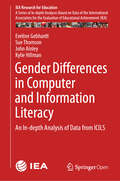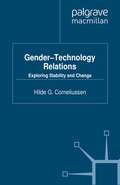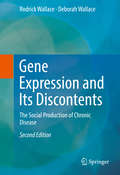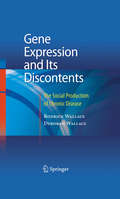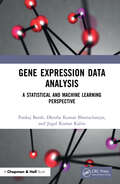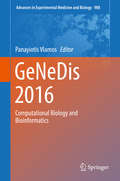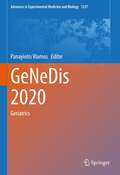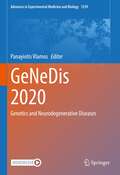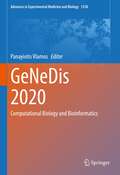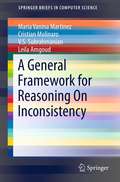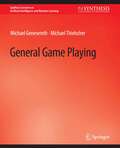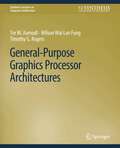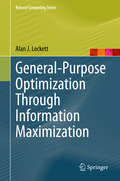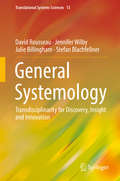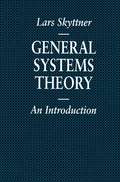- Table View
- List View
Gender Differences in Computer and Information Literacy: An In-depth Analysis of Data from ICILS (IEA Research for Education #8)
by Eveline Gebhardt Sue Thomson John Ainley Kylie HillmanThis open access book presents a systematic investigation into internationally comparable data gathered in ICILS 2013. It identifies differences in female and male students’ use of, perceptions about, and proficiency in using computer technologies. Teachers’ use of computers, and their perceptions regarding the benefits of computer use in education, are also analyzed by gender. When computer technology was first introduced in schools, there was a prevailing belief that information and communication technologies were ‘boys’ toys’; boys were assumed to have more positive attitudes toward using computer technologies. As computer technologies have become more established throughout societies, gender gaps in students’ computer and information literacy appear to be closing, although studies into gender differences remain sparse. The IEA’s International Computer and Information Literacy Study (ICILS) is designed to discover how well students are prepared for study, work, and life in the digital age. Despite popular beliefs, a critical finding of ICILS 2013 was that internationally girls tended to score more highly than boys, so why are girls still not entering technology-based careers to the same extent as boys? Readers will learn how male and female students differ in their computer literacy (both general and specialized) and use of computer technology, and how the perceptions held about those technologies vary by gender.
Gender, Ethics and Information Technology
by A. AdamThis book brings feminist philosophy, in the shape of feminist ethics, politics and legal theory, to an analysis of computer ethics problems including hacking, privacy, surveillance, cyberstalking and Internet dating. Adam claims that these issues cannot be properly understood unless we see them as problems relating to gender. For the first time, these issues are put under the feminist spotlight to show that traditional responses reproduce the public/private split which has so often reinforced the causes of women's oppression.
Gender Reboot: Reprogramming Gender Rights in the Age of AI
by Eleonore Fournier-TombsThis book explores gender norms and women’s rights in the age of AI. The author examines how gender dynamics have evolved in the spheres of work, self-image and safety, and education, and how these might be reflected in current challenges in AI development. The book also explores opportunities in AI to address issues facing women, and how we might harness current technological developments for gender equality. Taking a narrative tone, the book is interwoven with stories and a reflection on the raising young children during the COVID-19 pandemic. It includes both expert and personal interviews to create a nuanced and multidimensional perspective on the state of women’s rights and what might be done to move forward.
Gender-Technology Relations: Exploring Stability and Change
by H. CorneliussenThrough empirical material as well as theoretical discussions, this book explores developments in gender-technology relations from the 1980s to today. The author draws on her long-lasting research in the field, providing insight in both historical and more recent discussions of gender in relation to computers and computing.
Gene Expression and Its Discontents: The Social Production of Chronic Disease
by Rodrick Wallace Deborah WallaceThis book describes how epigenetic context, in a large sense, affects gene expression and the development of an organism, using the asymptotic limit theorems of information theory to construct statistical models useful in data analysis. The approach allows deep understanding of how embedding context affects development. We find that epigenetic information sources act as tunable catalysts, directing ontogeny into characteristic pathways, a perspective having important implications for epigenetic epidemiology. In sum, environmental stressors can induce a broad spectrum of developmental dysfunctions, and the book explores a number of pandemic chronic diseases, using U.S. data at different scales and levels of organization. In particular, we find the legacy of slavery has been grossly compounded by accelerating industrial decline and urban decay. Individual chapters are dedicated to obesity and its sequelae, coronary heart disease, cancer, mental disorders, autoimmune dysfunction, Alzheimer’s disease, and other conditions. Developmental disorders are driven by environmental factors channeled by historical trajectory and are unlikely to respond to medical interventions at the population level in the face of persistent individual and community stress. Drugs powerful enough to affect deleterious epigenetic programming will likely have side effects leading to shortened lifespan. Addressing chronic conditions and developmental disorders requires significant large-scale changes in public policy and resource allocation.
Gene Expression and Its Discontents: The Social Production of Chronic Disease
by Rodrick Wallace Deborah WallaceGene Expression and its Discontents examines a class of probability models describing how epigenetic context affects gene expression and organismal development, using the asymptotic limit theorems of information theory in a highly formal manner. Taking classic results on spontaneous symmetry breaking abducted from statistical physics in groupoid, rather than group, circumstances, the work suggests that epigenetic information sources act as analogs to a tunable catalyst, directing development into different characteristic pathways according to the structure of external signals. The results have significant implications for epigenetic epidemiology, in particular for understanding how environmental stressors, in a large sense, can induce a broad spectrum of developmental disorders in humans. The authors then apply the perspective to a number of chronic diseases broadly associated with obesity, using data at different scales of observation.
Gene Expression Data Analysis: A Statistical and Machine Learning Perspective
by Dhruba Kumar Bhattacharyya Jugal Kumar Kalita Pankaj BarahDevelopment of high-throughput technologies in molecular biology during the last two decades has contributed to the production of tremendous amounts of data. Microarray and RNA sequencing are two such widely used high-throughput technologies for simultaneously monitoring the expression patterns of thousands of genes. Data produced from such experiments are voluminous (both in dimensionality and numbers of instances) and evolving in nature. Analysis of huge amounts of data toward the identification of interesting patterns that are relevant for a given biological question requires high-performance computational infrastructure as well as efficient machine learning algorithms. Cross-communication of ideas between biologists and computer scientists remains a big challenge. Gene Expression Data Analysis: A Statistical and Machine Learning Perspective has been written with a multidisciplinary audience in mind. The book discusses gene expression data analysis from molecular biology, machine learning, and statistical perspectives. Readers will be able to acquire both theoretical and practical knowledge of methods for identifying novel patterns of high biological significance. To measure the effectiveness of such algorithms, we discuss statistical and biological performance metrics that can be used in real life or in a simulated environment. This book discusses a large number of benchmark algorithms, tools, systems, and repositories that are commonly used in analyzing gene expression data and validating results. This book will benefit students, researchers, and practitioners in biology, medicine, and computer science by enabling them to acquire in-depth knowledge in statistical and machine-learning-based methods for analyzing gene expression data. Key Features: An introduction to the Central Dogma of molecular biology and information flow in biological systems A systematic overview of the methods for generating gene expression data Background knowledge on statistical modeling and machine learning techniques Detailed methodology of analyzing gene expression data with an example case study Clustering methods for finding co-expression patterns from microarray, bulkRNA, and scRNA data A large number of practical tools, systems, and repositories that are useful for computational biologists to create, analyze, and validate biologically relevant gene expression patterns Suitable for multidisciplinary researchers and practitioners in computer science and biological sciences
Gene Expression Data Analysis: A Statistical and Machine Learning Perspective
by Dhruba Kumar Bhattacharyya Jugal Kumar Kalita Pankaj BarahDevelopment of high-throughput technologies in molecular biology during the last two decades has contributed to the production of tremendous amounts of data. Microarray and RNA sequencing are two such widely used high-throughput technologies for simultaneously monitoring the expression patterns of thousands of genes. Data produced from such experiments are voluminous (both in dimensionality and numbers of instances) and evolving in nature. Analysis of huge amounts of data toward the identification of interesting patterns that are relevant for a given biological question requires high-performance computational infrastructure as well as efficient machine learning algorithms. Cross-communication of ideas between biologists and computer scientists remains a big challenge. Gene Expression Data Analysis: A Statistical and Machine Learning Perspective has been written with a multidisciplinary audience in mind. The book discusses gene expression data analysis from molecular biology, machine learning, and statistical perspectives. Readers will be able to acquire both theoretical and practical knowledge of methods for identifying novel patterns of high biological significance. To measure the effectiveness of such algorithms, we discuss statistical and biological performance metrics that can be used in real life or in a simulated environment. This book discusses a large number of benchmark algorithms, tools, systems, and repositories that are commonly used in analyzing gene expression data and validating results. This book will benefit students, researchers, and practitioners in biology, medicine, and computer science by enabling them to acquire in-depth knowledge in statistical and machine-learning-based methods for analyzing gene expression data. Key Features: An introduction to the Central Dogma of molecular biology and information flow in biological systems A systematic overview of the methods for generating gene expression data Background knowledge on statistical modeling and machine learning techniques Detailed methodology of analyzing gene expression data with an example case study Clustering methods for finding co-expression patterns from microarray, bulkRNA, and scRNA data A large number of practical tools, systems, and repositories that are useful for computational biologists to create, analyze, and validate biologically relevant gene expression patterns Suitable for multidisciplinary researchers and practitioners in computer science and biological sciences
Gene Expression Programming: Mathematical Modeling by an Artificial Intelligence (Studies in Computational Intelligence #21)
by Candida FerreiraThis book describes the basic ideas of gene expression programming (GEP) and numerous modifications to this powerful new algorithm. It provides all the implementation details of GEP so that anyone with elementary programming skills will be able to implement it themselves. The book includes a self-contained introduction to this new exciting field of computational intelligence. This second edition has been revised and extended with five new chapters.
Genealogy Basics In 30 Minutes: The Quick Guide To Creating A Family Tree, Building Connections With Relatives, And Discovering The Stories Of Your Ancestors
by Shannon Combs-BennettGenealogists are like detectives. Working out puzzles is the name of their game! In the award-winning Genealogy Basics In 30 Minutes, professional genealogist Shannon Combs-Bennett explains the joys, challenges, and triumphs of researching your family's origins. Topics include research best practices, connecting with relatives, genetic genealogy, solving "brick wall" mysteries, genealogy road trips, and how to share charts, data, and family stories.
GeNeDis 2016: Computational Biology and Bioinformatics (Advances in Experimental Medicine and Biology #988)
by Panayiotis VlamosThe 2nd World Congress on Geriatrics and Neurodegenerative Disease Research (GeNeDis 2016), focuses on recent advances in geriatrics and neurodegeneration, ranging from basic science to clinical and pharmaceutical developments and provides an international forum for the latest scientific discoveries, medical practices and care initiatives. Advanced information technologies are discussed concerning the various research, implementation and policy, as well as European and global issues in the funding of long-term care and medico-social policies regarding elderly people. This volume focuses on the sessions from the conference on computational biology and bioinformatics.
GeNeDis 2018: Computational Biology and Bioinformatics (Advances in Experimental Medicine and Biology #1194)
by Panayiotis VlamosThe 3rd World Congress on Genetics, Geriatrics, and Neurodegenerative Disease Research (GeNeDis 2018), focuses on recent advances in genetics, geriatrics, and neurodegeneration, ranging from basic science to clinical and pharmaceutical developments. It also provides an international forum for the latest scientific discoveries, medical practices, and care initiatives. Advanced information technologies are discussed, including the basic research, implementation of medico-social policies, and the European and global issues in the funding of long-term care for elderly people.
GeNeDis 2020: Geriatrics (Advances in Experimental Medicine and Biology #1337)
by Panayiotis VlamosThe 4th World Congress on Genetics, Geriatrics and Neurodegenerative Diseases Research (GeNeDis 2020) focuses on the latest major challenges in scientific research, new drug targets, the development of novel biomarkers, new imaging techniques, novel protocols for early diagnosis of neurodegenerative diseases, and several other scientific advances, with the aim of better, safer, and healthier aging. The increase in the average length of life leads to the development of various diseases in the elderly population. This volume focuses on the sessions from the conference on Geriatrics.
GeNeDis 2020: Genetics and Neurodegenerative Diseases (Advances in Experimental Medicine and Biology #1339)
by Panayiotis VlamosThe 4th World Congress on Genetics, Geriatrics, and Neurodegenerative Diseases Research (GeNeDis 2020) focuses on the latest major challenges in scientific research, new drug targets, the development of novel biomarkers, new imaging techniques, novel protocols for early diagnosis of neurodegenerative diseases, and several other scientific advances, with the aim of better, safer, and healthier aging. The relation between genetics and its effect on several diseases are thoroughly examined in this volume. This volume focuses on the sessions from the conference on Genetics and Neurodegenerative Diseases.
GeNeDis 2020: Computational Biology and Bioinformatics (Advances in Experimental Medicine and Biology #1338)
by Panayiotis VlamosThe 4th World Congress on Genetics, Geriatrics and Neurodegenerative Diseases Research (GeNeDis 2020) focuses on the latest major challenges in scientific research, new drug targets, the development of novel biomarkers, new imaging techniques, novel protocols for early diagnosis of neurodegenerative diseases, and several other scientific advances, with the aim of better, safer, and healthier aging. Computational methodologies for implementation on the discovery of biomarkers for neurodegenerative diseases are extensively discussed. This volume focuses on the sessions from the conference regarding computational biology and bioinformatics.
A General Framework for Reasoning On Inconsistency (SpringerBriefs in Computer Science)
by Maria Vanina Martinez Cristian Molinaro V.S. Subrahmanian Leila AmgoudThis SpringerBrief proposes a general framework for reasoning about inconsistency in a wide variety of logics, including inconsistency resolution methods that have not yet been studied. The proposed framework allows users to specify preferences on how to resolve inconsistency when there are multiple ways to do so. This empowers users to resolve inconsistency in data leveraging both their detailed knowledge of the data as well as their application needs. The brief shows that the framework is well-suited to handle inconsistency in several logics, and provides algorithms to compute preferred options. Finally, the brief shows that the framework not only captures several existing works, but also supports reasoning about inconsistency in several logics for which no such methods exist today.
General Game Playing (Synthesis Lectures on Artificial Intelligence and Machine Learning)
by Michael Liu Michael XiaGeneral game players are computer systems able to play strategy games based solely on formal game descriptions supplied at "runtime" (n other words, they don't know the rules until the game starts). Unlike specialized game players, such as Deep Blue, general game players cannot rely on algorithms designed in advance for specific games; they must discover such algorithms themselves. General game playing expertise depends on intelligence on the part of the game player and not just intelligence of the programmer of the game player. GGP is an interesting application in its own right. It is intellectually engaging and more than a little fun. But it is much more than that. It provides a theoretical framework for modeling discrete dynamic systems and defining rationality in a way that takes into account problem representation and complexities like incompleteness of information and resource bounds. It has practical applications in areas where these features are important, e.g., in business and law. More fundamentally, it raises questions about the nature of intelligence and serves as a laboratory in which to evaluate competing approaches to artificial intelligence. This book is an elementary introduction to General Game Playing (GGP). (1) It presents the theory of General Game Playing and leading GGP technologies. (2) It shows how to create GGP programs capable of competing against other programs and humans. (3) It offers a glimpse of some of the real-world applications of General Game Playing.
A General Model of Legged Locomotion on Natural Terrain (The Springer International Series in Engineering and Computer Science #179)
by David J. MankoDynamic modeling is the fundamental building block for mechanism analysis, design, control and performance evaluation. One class of mechanism, legged machines, have multiple closed-chains established through intermittent ground contacts. Further, walking on natural terrain introduces nonlinear system compliance in the forms of foot sinkage and slippage. Closed-chains constrain the possible motions of a mechanism while compliances affect the redistribution of forces throughout the system. A General Model of Legged Locomotion on Natural Terrain develops a dynamic mechanism model that characterizes indeterminate interactions of a closed-chain robot with its environment. The approach is applicable to any closed-chain mechanism with sufficient contact compliance, although legged locomotion on natural terrain is chosen to illustrate the methodology. The modeling and solution procedures are general to all walking machine configurations, including bipeds, quadrupeds, beam-walkers and hopping machines. This work develops a functional model of legged locomotion that incorporates, for the first time, non-conservative foot-soil interactions in a nonlinear dynamic formulation. The model was applied to a prototype walking machine, and simulations generated significant insights into walking machine performance on natural terrain. The simulations are original and essential contributions to the design, evaluation and control of these complex robot systems. While posed in the context of walking machines, the approach has wider applicability to rolling locomotors, cooperating manipulators, multi-fingered hands, and prehensile agents.
General Principles of EU Law and the EU Digital Order
by Ulf Bernitz Xavier Groussot Jaan Paju Sybe De VriesDigitalization of societies has important ramifications for citizens and businesses. The digital landscape is rapidly changing, whereas at the same time there are growing concerns about how market access in the EU’s digital market as well as fundamental rights can be sufficiently safeguarded in the shadow of ‘big data’ and algorithms. This timely and important book presents expert analyses of how digitalization raises questions of the future role for general principles of European Union (EU) law, including the foundational principles of the EU’s fundamental economic freedoms and EU competition rules. Examining a number of issues revolving around the internal market, the digital single market, competition law, intellectual property, data protection, democracy and the rule of law, the contributors provide deeply informed insights of the challenges as to: effects of the technological disruption on the doctrine of general principles; the resilience of general principles in the digital society; the need to rely on new general principles in the digital society; the realization of the digital single market; the safeguarding of fundamental rights and the rule of law. The contributors are highly esteemed scholars from major European universities. A common theme is the need for judicial evolution of EU fundamental rights law in the digital era, alongside penetrating analyses of recent Court of Justice of the European Union case law on the impact of digitalization. Dealing as it does with an area of European law of particular complexity and rapidly growing importance, the anthology provides insights and knowledge about the ways in which digitalization is rapidly changing EU law. Are general principles of EU law as developed in an ‘analogue world’ sufficiently resilient to withstand the rapid and often disruptive developments taking place in the digital marketplace? The fresh look at the concept of ‘general principles’ taken by the various contributors helps to clarify the actual application in EU law in areas related to the ongoing digitalization of our society. It will be greatly appreciated by practitioners, policymakers and academics active in any of the many fields of law affected by the digital revolution.
General Principles of Quantum Mechanics
by Wolfgang PauliI am very happy to accept the translators' invitation to write a few lines of introduction to this book. Of course, there is little need to explain the author. Pauli's first famous work, his article on the theory of relativity in the Encyklopädie der Mathematischen Wissenschaften was written at the age of twenty. He afterwards took part in the development of atomic physics from the still essentially classical picture of Bohr's early work to the true quantum mechanics. Thereafter, some of his work concerned the treatment of problems in the framework of the new theory, especially his paper on the hydrogen atom following the matrix method without recourse to Schrodinger's analytic form of the theory. His greatest achievement, the exclusion principle, generally known today under his own name as the Pauli principle, that governs the quantum theory of all problems including more than one electron, preceded the basic work of Heisenberg and Schrodinger, and brought him the Nobel prize. It includes the mathematical treatment of the spin by means of the now so well known Pauli matrices. In 1929, in a paper with Heisenberg, he laid the foundation of quantum electrodynamics and, in doing so, to the whole theory of quantized wave fields which was to become the via regia of access to elementary particle physics, since here for the first time processes of generation and annihilation of particles could be described for the case of the photons.
General-Purpose Graphics Processor Architectures (Synthesis Lectures on Computer Architecture)
by Tor M. Aamodt Wilson Wai Fung Timothy G. RogersOriginally developed to support video games, graphics processor units (GPUs) are now increasingly used for general-purpose (non-graphics) applications ranging from machine learning to mining of cryptographic currencies. GPUs can achieve improved performance and efficiency versus central processing units (CPUs) by dedicating a larger fraction of hardware resources to computation. In addition, their general-purpose programmability makes contemporary GPUs appealing to software developers in comparison to domain-specific accelerators. This book provides an introduction to those interested in studying the architecture of GPUs that support general-purpose computing. It collects together information currently only found among a wide range of disparate sources. The authors led development of the GPGPU-Sim simulator widely used in academic research on GPU architectures. The first chapter of this book describes the basic hardware structure of GPUs and provides a brief overview of their history. Chapter 2 provides a summary of GPU programming models relevant to the rest of the book. Chapter 3 explores the architecture of GPU compute cores. Chapter 4 explores the architecture of the GPU memory system. After describing the architecture of existing systems, Chapters 3 and 4 provide an overview of related research. Chapter 5 summarizes cross-cutting research impacting both the compute core and memory system. This book should provide a valuable resource for those wishing to understand the architecture of graphics processor units (GPUs) used for acceleration of general-purpose applications and to those who want to obtain an introduction to the rapidly growing body of research exploring how to improve the architecture of these GPUs.
General-Purpose Optimization Through Information Maximization (Natural Computing Series)
by Alan J. LockettThis book examines the mismatch between discrete programs, which lie at the center of modern applied mathematics, and the continuous space phenomena they simulate. The author considers whether we can imagine continuous spaces of programs, and asks what the structure of such spaces would be and how they would be constituted. He proposes a functional analysis of program spaces focused through the lens of iterative optimization. The author begins with the observation that optimization methods such as Genetic Algorithms, Evolution Strategies, and Particle Swarm Optimization can be analyzed as Estimation of Distributions Algorithms (EDAs) in that they can be formulated as conditional probability distributions. The probabilities themselves are mathematical objects that can be compared and operated on, and thus many methods in Evolutionary Computation can be placed in a shared vector space and analyzed using techniques of functional analysis. The core ideas of this book expand from that concept, eventually incorporating all iterative stochastic search methods, including gradient-based methods. Inspired by work on Randomized Search Heuristics, the author covers all iterative optimization methods and not just evolutionary methods. The No Free Lunch Theorem is viewed as a useful introduction to the broader field of analysis that comes from developing a shared mathematical space for optimization algorithms. The author brings in intuitions from several branches of mathematics such as topology, probability theory, and stochastic processes and provides substantial background material to make the work as self-contained as possible. The book will be valuable for researchers in the areas of global optimization, machine learning, evolutionary theory, and control theory.
General Systemology: Transdisciplinarity for Discovery, Insight and Innovation (Translational Systems Sciences #13)
by David Rousseau Jennifer Wilby Julie Billingham Stefan BlachfellnerThis book expands the foundations of general systems theory to enable progress beyond the rich heuristic practices available today. It establishes a foundational framework for the development of scientific transdisciplinary systems principles and shows how these can amplify the potential of individuals and teams working in multi-, inter- and transdisciplinary contexts or striving to translate their progress across disciplinary boundaries. Three general scientific systems principles are presented, and their relevance to the design, analysis, management and transformation of systems is explored. Applying lessons from the history and philosophy science, this book disambiguates key concepts of general systemology, clarifies the role of general systemology within the field of systemology, and explains how general systemology supports other forms of transdisciplinarity. These insights are used to develop new perspectives, strategies and tools for addressing long-standing challenges to the advancement and transdisciplinary application of general insights into the nature of complex systems.The material presented in this book includes comprehensive models of the structure of systemology as a disciplinary field, the structure and significance of the general systems worldview, and the role of general systemology as the heart of systems science, systems engineering and systems practice. It explains what a fully-fledged general theory of systems would look like, what its potential is, what routes are available to us to develop it further, and how to leverage the knowledge we have attained so far. Many examples and analogies show how general systemology has the potential to enable scientific discovery, insightful theory building, and practical innovation in all the disciplines as they study, design, nurture or transform complex systems. This book is essential reading for anyone wishing to master the concepts, terminology, models and strategies needed to make effective use of current general systems knowledge and to engage in the further development of the philosophy, science, and practice of general systemology.
General Systems Theory: An Introduction (Information Systems Series)
by Lars SkyttherSystems theorists see common principles in the structure and operation of systems of all kinds and sizes. They promote an interdisciplinary science, intended for universal application and having a common language and range of concepts. This approach is seen as a means to overcome the fragmentation of knowledge and the isolation of the specialist; it also seeks new solutions to problems created by earlier 'solutions to problems'. The book is divided into two parts. The first part is devoted to the historical background of the systems movement and presents pioneering thoughts and theories of the area. The basic concepts of general systems theory are introduced, together with some well-known laws and principles; related topics, such as cybernetics and information theory, are also examined. The second part deals with some of the common applications of systems theory within systems science, including artificial intelligence, management information systems, informatics and other associated topics. Finally, an attempt is made to predict the future of systems theory in a world apparently destined to be at the same time both fragmented and integrated.
General Theory of Information Transfer and Combinatorics (Lecture Notes in Computer Science #4123)
by Rudolf Ahlswede Lars Bäumer Ning Cai Harout Aydinian Vladimir Blinovsky Christian Deppe Haik MashurianThis book collects 63 revised, full-papers contributed to a research project on the "General Theory of Information Transfer and Combinatorics" that was hosted from 2001-2004 at the Center for Interdisciplinary Research (ZIF) of Bielefeld University and several incorporated meetings. Topics covered include probabilistic models, cryptology, pseudo random sequences, quantum models, pattern discovery, language evolution, and network coding.
